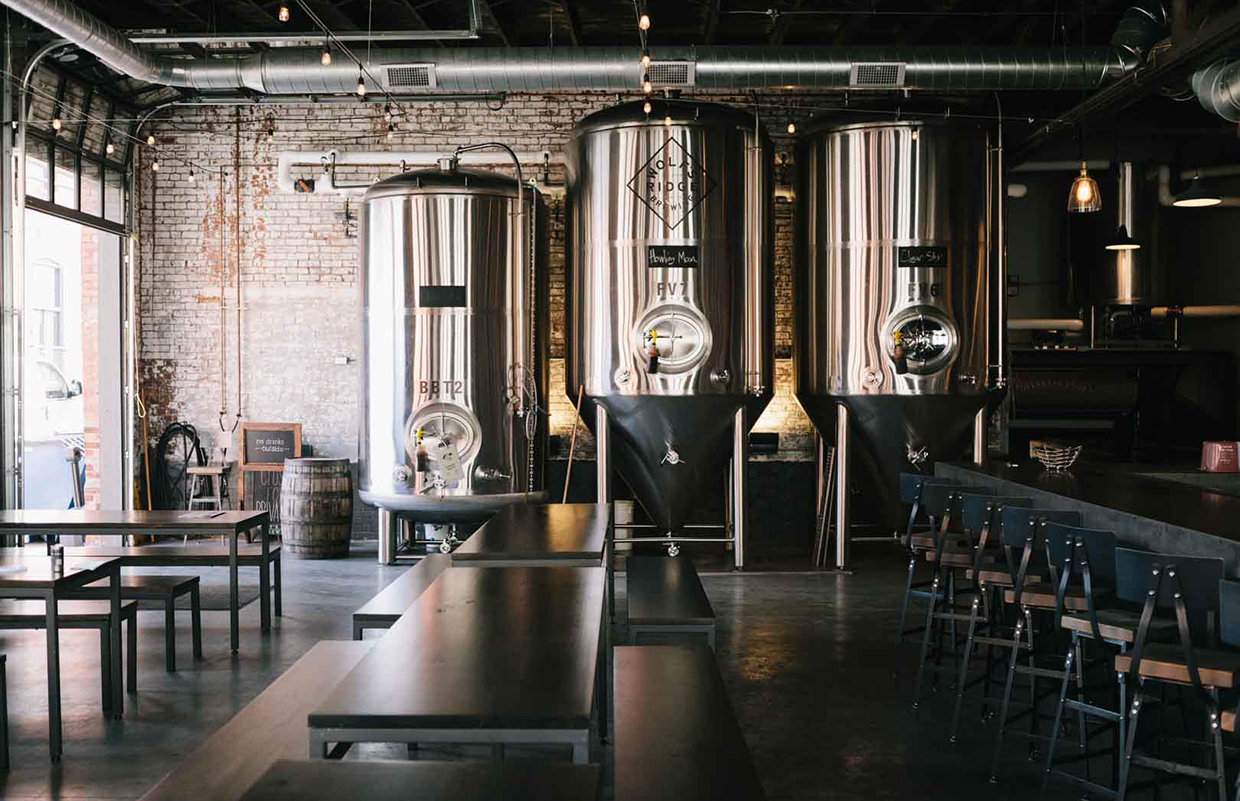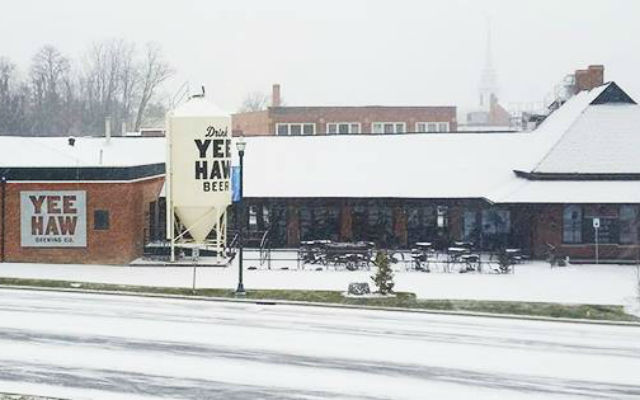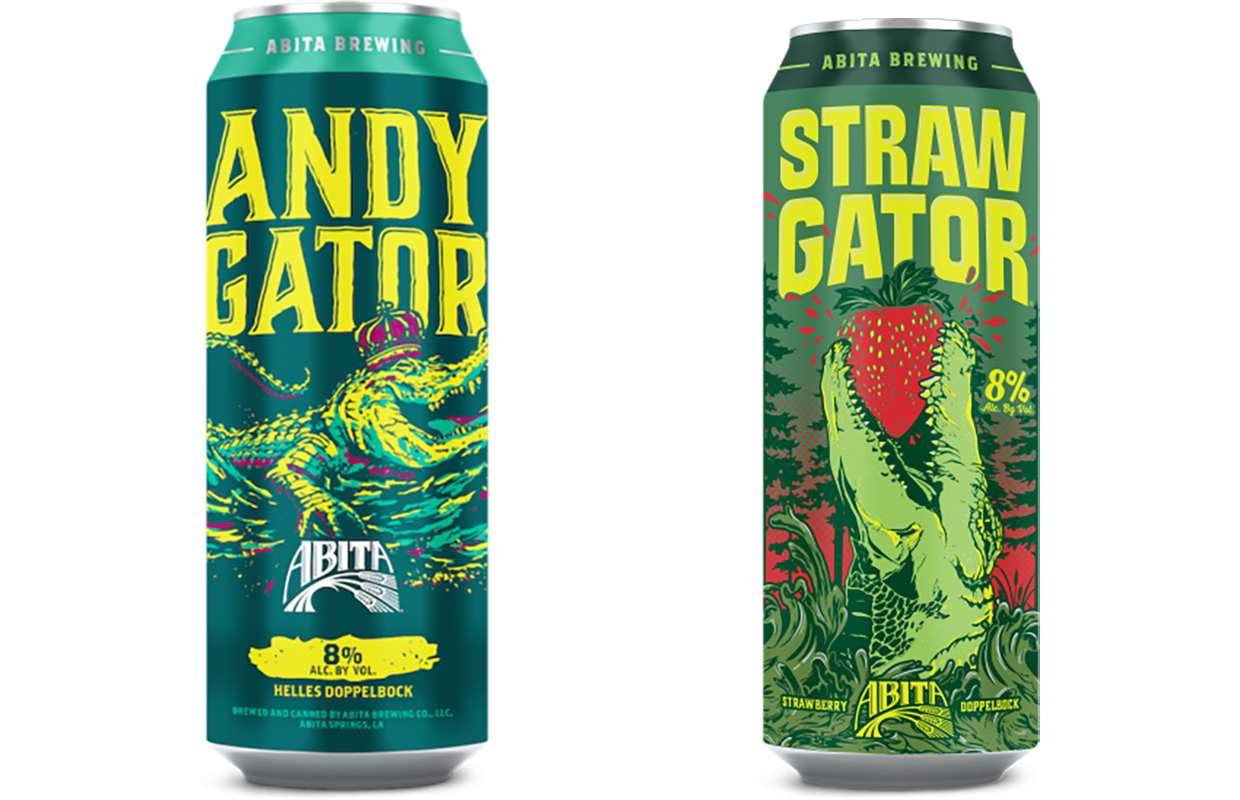
This year at the Great American Beer Fest, Windfall Brewing showcased a lineup of vast hopping techniques, including a fresh hop beer.
Head Brewer Michael Hoops shared with Brewer recently about the brewery’s Wet Hop American Pale. Hoops drove to nearby Mead, Colorado from the brewery at The Orchard Town Center to collect the freshly harvested hops, and immediately incorporate them into the brew.
“Brewing with wet hops is expensive, so I definitely want hops that will stand out,” Hoop said. “I want hops that I enjoy in their processed form, so we can taste what they are like super fresh.”
This year Windfall used Comet and Cascade for a very classic West Coast hop feel.
“Some may think (it’s) a bit pedestrian,” Hoops said, “but when they are fresh like this, they express so much flavor and aroma that you don’t typically get from processed hops.
“That being said, you need to choose hops that make great late additions already. I wouldn’t bother making a wet hops beer with hops that I would only use as bittering additions.”
Getting the right flavor out of wet hops can be a bit tricky, he noted.
“They are full of water and chlorophyll, which can make your beer taste like wet grass if you are not careful,” he said. “They also need to be boiled enough to extract the oils we are looking for. We are also putting a ton of whole cones in our kettle, which was really designed for pellets. This makes it difficult to knock out our wort without clogging our heat exchange.
“I basically have to rig up a wort grant with the filter bag that runs out of the kettle and then back into our pump, so I don’t shoot a bunch of hop cones and petals into the heat exchange.”
Hoop said they also need to allow a few extra hours at the end of the brew to cool the hops and scoop them out of the kettle.
“It’s hard work, but it’s fun because we can only do it once a year, and we know the results are going to be amazing.”
Being a smaller brewery, Hoops said they can’t do any hop analysis beforehand, and most often the farmer also hasn’t done analysis yet, as the hops are being picked the same day they are brewing.
“I have been told — and found this to be true — that the hop weight of wet hops is about four times that of dry hops,” Hoops said. “So I use that as a benchmark and scale my hop additions accordingly, using the alpha acid percentage that the farmer assumes his hops will be.
“If you have a knowledgeable farmer, they can be pretty accurate with their numbers before the hops even go to analysis. But one of the fun things about brewing with wet hops is that you have to trust your instinct.”
When he brews a wet hopped beer, Hoops divides additions into three, adding about half of his weight 10 minutes before the boil is finished.
“As soon as flame out, I will add another quarter of the hops and then bring the whirlpool down to below 190°F and do a 15- to 20-minute whirlpool with the remaining quarter of the hops,” he said. “This way, the hops are in the heat long enough to isomerize some alphas and extract all the fresh, juicy flavors, but not so long that the wort gets grassy, or we lose that precious fresh hop taste.”
Although there isn’t much chance on the fermentation side, Hoops said he does allow the beer to sit cold in the brite tank for a few extra days longer than other hoppy beers.
READ MORE: Inside Hop Harvest Selection Day
“I find the initial flavors and aromas to be a bit rough around the edges after transferring to the brite tank,” he said. “It takes a bit of time for everything to settle.”
Wineries, he said, call this phenomenon “bottle shock,” and it happens to beer too.
“It can taste terrific sampling from the fermenter, and then you transfer to the brite tank, and it tastes muddled, maybe a bit bitter, and it just needs some time to figure itself out,” he said.
Plans for next year are already underway.
“I would like to dry hop with wet hops next year, but getting the timing with the farmers and having the beer ready for the Great American Beer Fest competition was a bit too daunting this year,” Hoops said. “When the farmer calls you and tells you he is picking today, you sort of drop everything and go.”







Be the first to comment